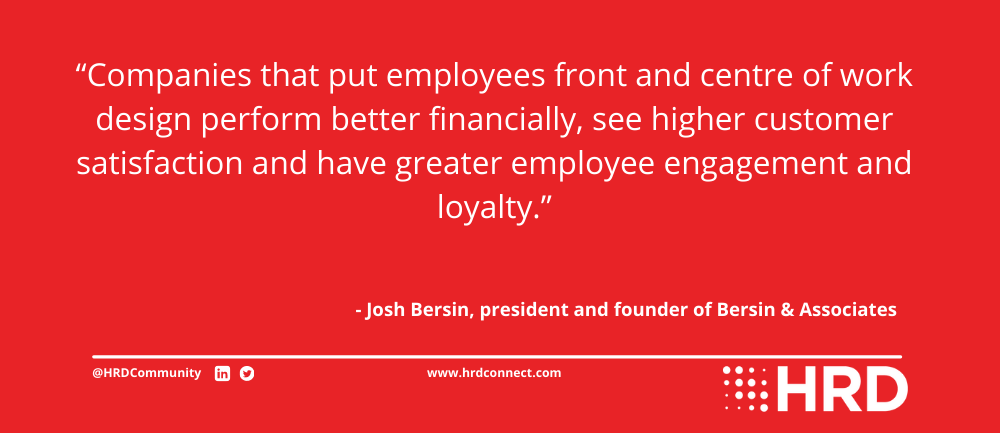Change from org chart hierarchies that don’t help to something that does: Work design
- 4 Min Read
Global HR analyst Josh Bersin explains why rigid organisational structures are standing in the way of business growth. In order to scale in the New Normal, leaders must focus on work practices that facilitate employee development, allow for flexibility, and empower teams.
- Author: Josh Bersin
- Date published: May 4, 2022
- Categories

A way of organising work, functional workplace hierarchy was invented at the start of the Industrial Revolution in the 1800s. Then, the workforce was primarily divided into ‘labour’, people who did what they were told to do, and ‘management’, individuals who decided what those people did, and then told them how to do it.
Fast forward to 2022, and more than 90% of jobs are now service roles. In such jobs, labour is much less important, and instead, human ingenuity and empathy are paramount. In today’s business climate, that means functional hierarchies don’t enable the level of business agility companies need.
What’s emerging as more suited to today’s work settings are workplace ‘org charts’ that empower individuals, and which assign responsibility for cross-functional teams and projects.

This new style of organising work is much better suited for today’s need for speed and adaptability and is part of a widespread shift to employee-centric work design. In nursing, for example, there is a concept of working at the top of your license—spending time on the work you’ve been trained and certified to do. But research shows that most nurses only do this about a third of the time; more than two-thirds of their workday revolves around staffing, hiring, training, scheduling, and dealing with administration, bureaucracy, and paperwork. It would clearly be much better if some parts of that job were carried out by specialists in admin, leaving the professionals to concentrate on what matters to them: making working at the top of their licence a real deliverable, and redesigning jobs to be more around the work you want your people to be doing.
Employee experience must be front and centre
New research we’ve conducted on a global basis confirms that better work design is the greatest driver of business outcomes. However, most companies are stuck in the past. In our survey, 58% of respondents admitted their companies are still using top-down, command-and-control organisational structures, for example, or are still heavily reliant on role-based organisational design principles. Only one in ten are using modern work design techniques to get a true understanding of how work is actually performed and get away from those old-style hierarchies.
To help, we have identified four levels of organisational design maturity. According to our analysis, only 11% of companies are at the highest level. These are the companies that identify the work outcomes that will define success, and then define the skills and experiences needed and who is accountable for the work. At every step, they are including employees in the work design process. They also implement internal talent marketplaces, which are indispensable for matching people with opportunities and projects.
In our research, we investigated 73 practices, and found five to have the biggest impact on business outcomes, innovation, and employee performance and engagement. They include fair reward and recognition and an understanding of the company’s culture, and how it influences organisational and work design.
Of paramount importance is incorporating employee experience (EX) considerations into every aspect of design. Companies that put employees front and centre of work design perform better financially, see higher customer satisfaction, and have greater employee engagement and loyalty.
Making the shifts required to move away from hierarchical models takes time and hard work. But we need to stop working like we did in the 1800s and pivot to putting people-led and agile practices into place to let our people excel the way they want to.
Josh Bersin is an internationally recognized analyst, educator, and thought leader in the global talent market. This article is based on The Josh Bersin Company’s report, The Definite Guide to Organization Design: The Journey to Agile. Explore his analysis in greater detail here.









